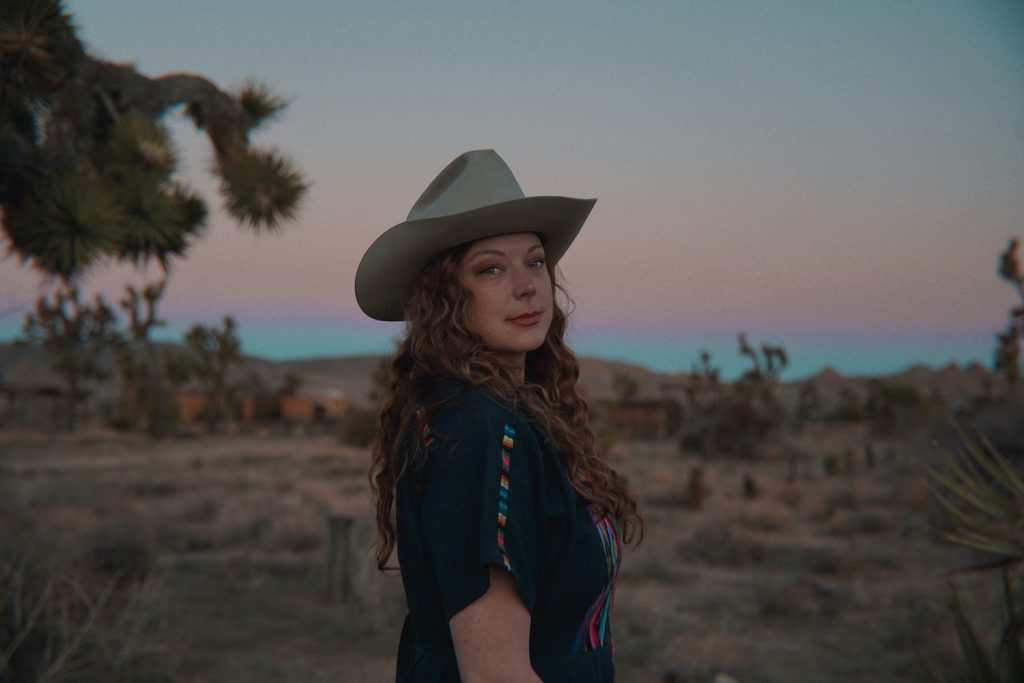
Based on the ample online evidence, Kaitlin Butts had one whale of a wedding. So you’d think it might’ve been a challenge to get inside the skin of the desperate women that inhabit her strikingly mature new release, What Else Can She Do (Soundly Music). In the end, the Tulsa, Okla., native didn’t have to go far for inspiration, using the fallout from her mother’s divorce as the fuel for the LP’s signature track, “It Won’t Always Be This Way,” and taking it from there.
Part of the diverse Okie sector of a “Red Dirt” scene that’s produced such noted acts as Turnpike Troubadours and Parker Millsap, Butts has an easy, unaffected vocal delivery along the lines of Kacey Musgraves. But her fixation on the messier side of heartache (see “Blood” and “In The Pines”) and her unwavering traditionalist bent trumps any overt pop aspirations. Produced by Oran Thornton (Angaleena Presley) at Nashville’s Sound Emporium Studios, What Else Can She Do is the follow-up to her 2015 debut, Same Hell, Different Devil. Butts has filled that seven-year gap with a string of singles and a long-term relationship with Flatland Calvary frontman Cleto Cordero, which led to the aforementioned nuptials in 2020.
Now relocated to Nashville and prepping for a series of shows to promote her new album, Butts checked in with MAGNET for a quick chat on her way to the airport. She was refreshingly forthcoming about her ’90s pop influences, her obsession with Broadway and the challenges of married life for two working musicians.
What did you listen to growing up?
I grew up in Tulsa, so I didn’t really have access to the Texas music scene. I was listening to anything on the radio—pop music, lots of ’90s country like the Dixie Chicks and Shania Twain. Anything that came out in the ’90s—emo, pop, country, rock—I listened to it all. I saw Brandi Carlisle when I was 16 years old, and I’ve been a fan ever since.
So why country?
I grew up doing musical-theater stuff—voice lessons, dance lessons, acting, the whole shebang. But I was always drawn to country music. I did tap-dance routines to John Cash’s “Get Rhythm” and the Dixie Chicks’ “Let Her Rip.” I loved murder songs from Broadway musicals. Country music has the same storytelling element that musicals have—putting a light on a normal story and making it seem more extravagant.
What Else Can She Do is bookended by “It Won’t Always Be This Way” and “In The Pines.” Both have a country-noir feel.
There are elements in other songs that I really adore—for example, “Bang Bang (My Baby Shot Me Down)” by Nancy Sinatra. I really love that tremolo guitar sound. It’s what I wanted start off the album with. I was listening to a ton of American Aquarium and Led Zeppelin when I was writing “She’s Using,” “Blood” and “In The Pines”—those darker songs.
Why only seven tracks?
I know I’ll probably catch some flack for not doing more. But I wrote all of them at a specific time of my life when I wasn’t doing very great and things were really chaotic. This was the story I wanted to tell.
You took a risk marrying a working musician—though I guess it helps that you’re one, too.
[Laughs] God bless anyone who’s married to a musician—most aren’t the best. But I got a really good one. It would be a lot harder for me if I had someone at home. There’d be a lot of guilt involved. We really cherish the time we get to hang out, because it really is pretty rare. It might be two days, and then I won’t see him for another month. It adds a whole new dynamic to the relationship. I think it strengthens it.
—Hobart Rowland







